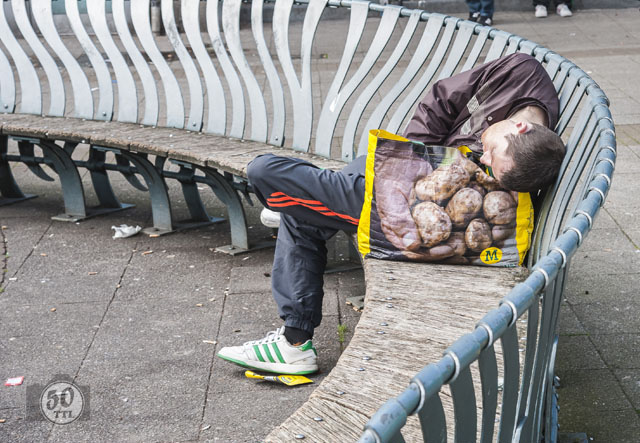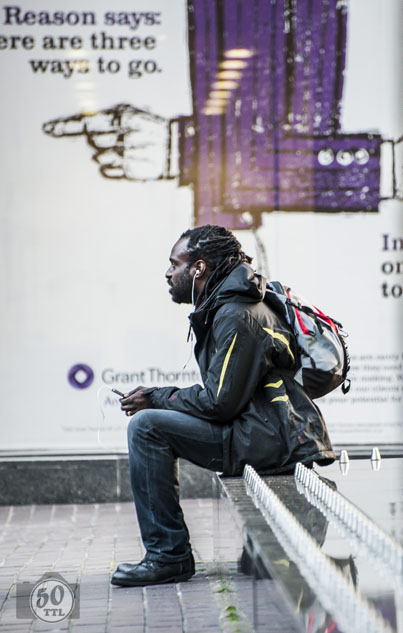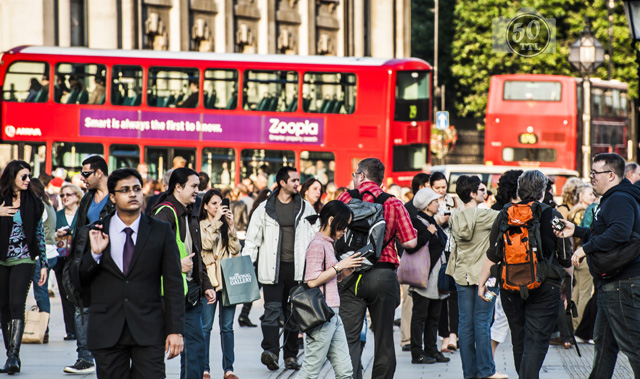
I have a few street photos that I particularly like. This one has a story. My wife Marg didn’t see me take this photo, near the docks area in Edinburgh, Scotland. She didn’t know about it until we returned to Australia and I sorted through the photos.
One night we showed our travel photos to some friends. She saw the photo and, at first, had no comment. But after a moment she saw the way the hand on the bag almost connects to the arm of the owner. “Oh, have you noticed that?” she said. “The hand in the picture on the bag connects with his body. So lucky that you took that.”
Had I noticed? It wasn’t luck at all, I told her. I saw the juxtaposition and that’s why I took the photo. I think that came as a bit of a surprise to Marg, but why wouldn’t I see it, after decades of composing photos? (Don’t let me claim too much here – for much of the family years I took mostly so-so pictures, and far fewer than in the digital era.)
When I look at the world, I see qualities of light, surface textures, strange juxtapositions, interesting angles, significant shapes and moments worth recording. I see buildings and people and landscapes that will never again look quite as they do at that moment. I see people’s faces, posture and dress telling stories about them to which they themselves may be completely oblivious.
Not all of it is worth recording, and I record a minuscule percentage of the world that I see. Of that, most of the photos are not very significant. None of them are going to challenge or change the world’s ideas about photography. But there are a precious few that have huge value to me, and some even have value to other people.
Against that, futurists and science fiction writers speculate about a future in which people record their entire lives, forgoing the necessity to choose one moment or one angle over another. Upload the lot and keep it forever. If there is any merit in this, it is something quite separate from the creative impulse of photographing a selected subject at a defining moment. One is an act of recording, the other is an act of creation.

Here is another street photo from the same trip. I like the interplay between the direction of the man’s gaze and the pointing finger behind him. There is a partially obscured hand pointing down, where he is sitting, curiously, on metal studs designed to deter sitting or lying.
There are interesting issues around street photography to do with consent and privacy. None of us own the light that bounces off our body. Photographers can record that light so long as there is no excessive intrusion into someone’s personal space, such as cleavage or knicker photos.
Many people think that whenever someone is identifiable in a photo, the photographer must seek permission before publishing. I disagree. If it is reasonable to ask for permission, I do. If not, I decide for myself if the photo offers any risk to the reputation of the person. If they might be shamed or put at risk by my photo, I don’t publish it. If there is no risk to them, I consider it okay to publish without their permission, if that is the only option. Imagine trying to get permission from the identifiable faces in the photo below.

Given the current anxieties around child safety, I usually refrain from taking photos that include children unless I know the parents consent to the photos. Occasionally I might include children in a photo without that consent, but only anonymously from behind.
I’d rather be a reasonable and compassionate human being who takes lesser photos than be a camera superstar who treats other humans as a resource base to be mined for images.